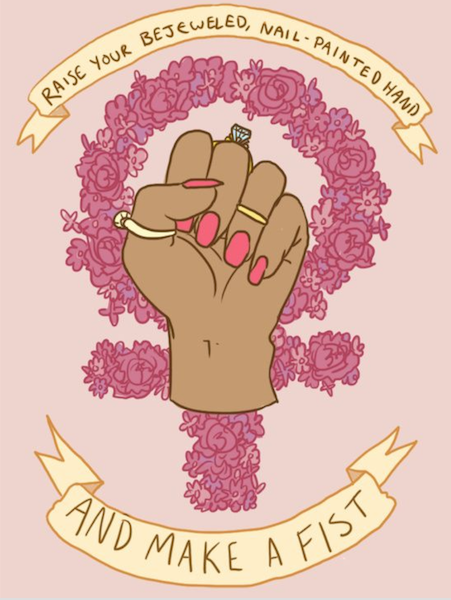Culture June 20, 2018
Feminism embodies ALL women.


Historically men have dominated the art world. A feminist art movement didn’t materialize until the late 1960s. Feminist artists aimed to create a dialogue between the viewer and the artwork based on a woman’s perspective. The goal of feminist art is to incite the viewer to question the social and political landscape, and through this questioning, bring change toward equality.
The feminist art movement occurred right alongside the civil rights movement. Since this was a time when blacks were fighting to gain equality, the feminist conversation excluded black women.
When people discuss feminist artists they often discuss white women and the artistic accomplishments of white women.
So how do black women fit into the feminist ideal of equality? They don’t. Black women had to first fight for basic human rights and then for basic women’s rights. Accordingly, black women created their own feminist movement called “womanism.”
Catherine Morris, a curator at the Brooklyn Museum, powerfully articulated this intersectionality when she said: “Black women were trying to find room for themselves as women, as black, as artists, as activists and how to manage and deal with all of those things…The question was, do you align yourselves with the black power movement and deal with sexism in that context? Do you align yourself with feminism and deal with racism in that context? There is always a battle to be fought.”
Here are three feminist artists of African-American heritage who fiercely fought these overlapping battles.
Best known for her iconic reclamation of the Aunt Jemima figure in her piece The Liberation of Aunt Jemima (1972), Betye Saar was a pioneer of second-wave feminism and postwar black nationalist art. Her collages and assemblages would feature stereotypical black figures, like Aunt Jemima and Uncle Tom, in order to critique society’s discriminatory views of black people.
Saar’s work Red Time was featured in “Pacific Standard Time,” a 2011 survey of influential LA artists. It was an installation of her assemblages from both past and present that explored the relationship between personal and collective history. “I’m the kind of person who recycles materials but I also recycle emotions and feelings,” Saar says.
Saar was certainly not afraid to put her thoughts and emotions on paper.
Howardena Pindell explores color, structures, textures and the process of art. Inspired by the black power and feminist movements, her work is often political, addressing the intersecting issues of racism, feminism, violence, slavery and exploitation. She is best known for her use of unconventional materials in her paintings, including string, glitter and perfume.
In the mid-1970s, and again in 2007, Pindell worked on a series called “Video Drawings.” Free, White, and 21, is her most distinct video drawing. In the work she appears as a caricature of a white woman, wearing a blonde wig, glasses and a stocking over her head. Dressed as a white a woman, she discusses her personal experience with racism.
Being both black and a feminist took moxie, and Howardena proved she had plenty.
Considered one of the most influential contemporary artists, Carrie Mae Weems works with visual and verbal narratives that address the African-American experience of racial and gender stereotyping and oppression. She uses a range of mediums, including photography, text, fabric, audio, digital images, installation and video to explore themes of cultural identity, sexism, class and consequences of power.
Her most noted work is the “Kitchen Table Series.” The photographs show the artist at her kitchen table. The series examines various stereotypes of African-American life. “Photography can be used as a powerful weapon toward instituting political and cultural change,” Weems states. “I for one will continue to work toward this end.”
Carrie Mae pictured a world where equality and positive change is possible. She then photographed that world.
Art can make powerful statements that transcend barriers and reveal commonalities of our shared human experience. These feminist artists deserve to be a part of the feminist conversation for their significant contributions. These women are a reminder that the feminist art movement, and feminism in general, should embody ALL women.